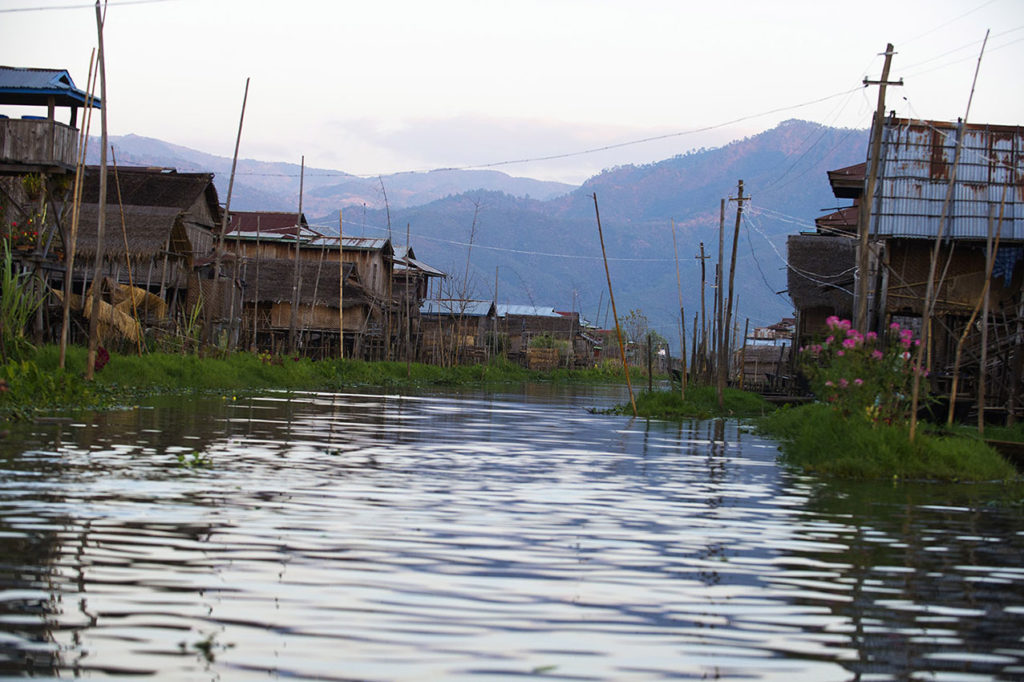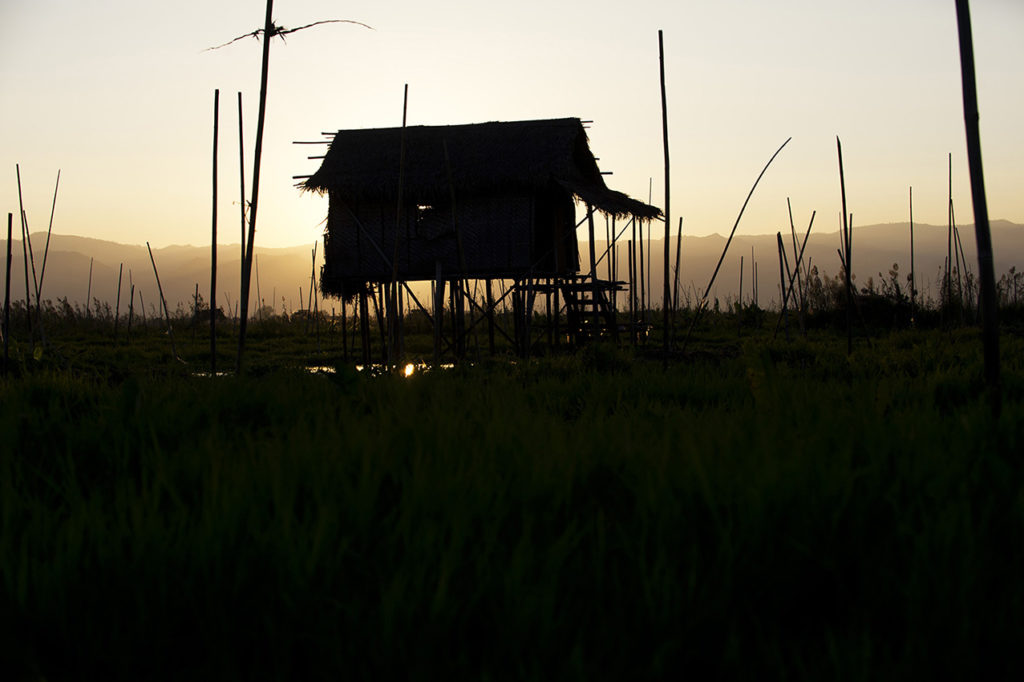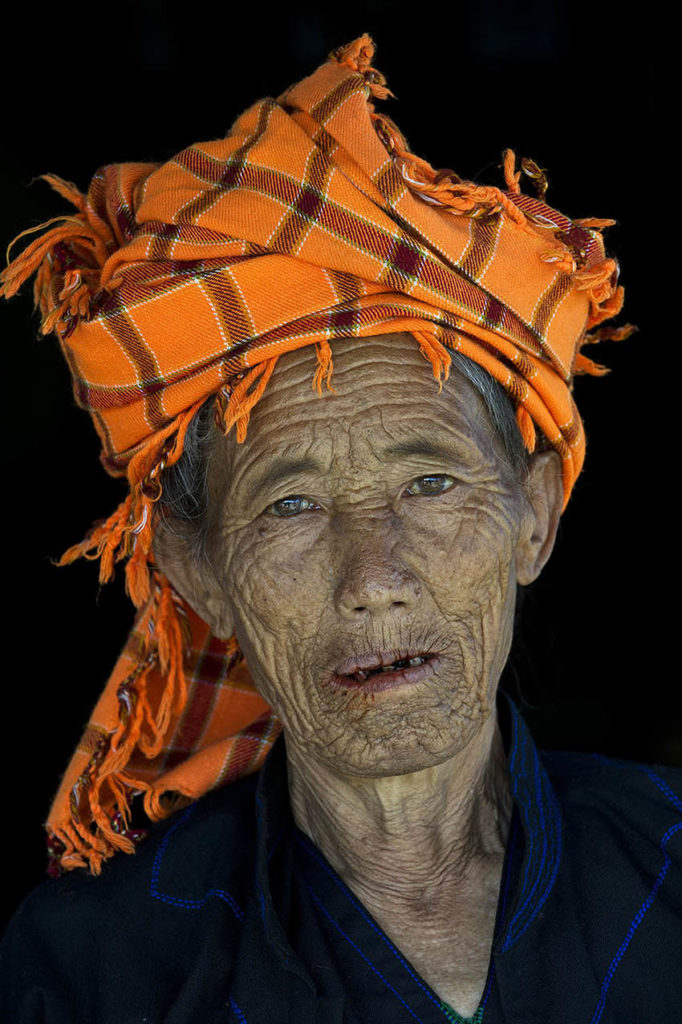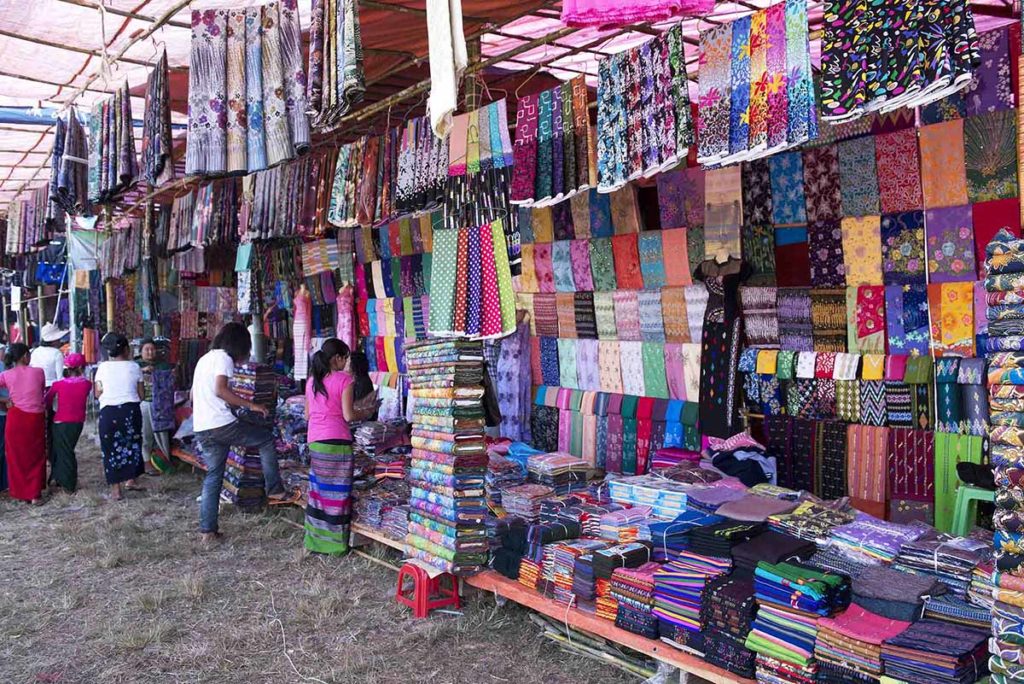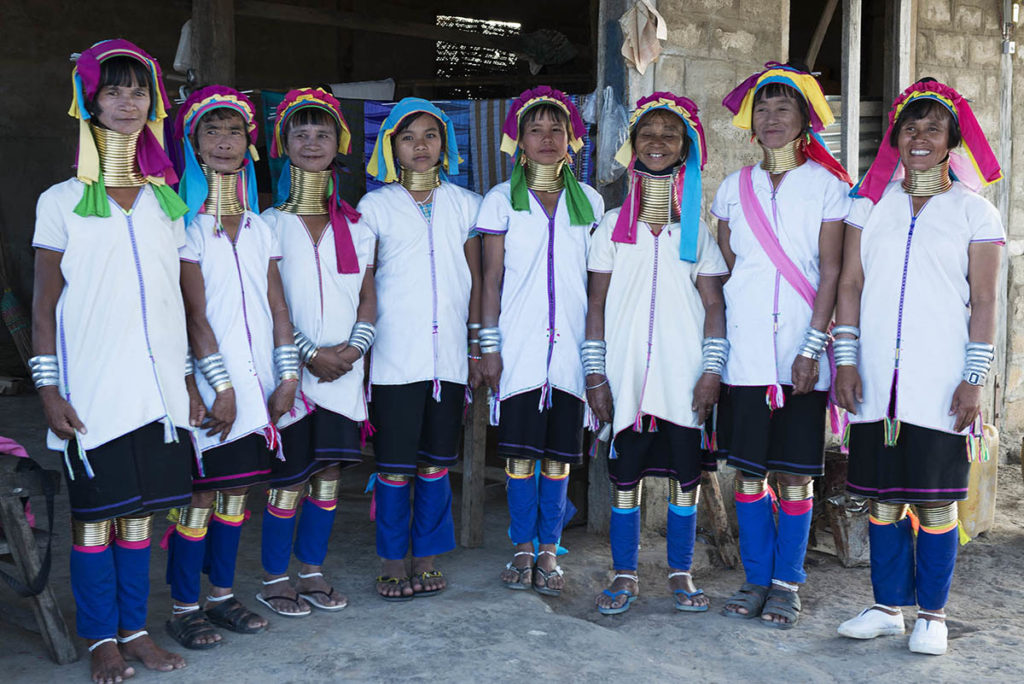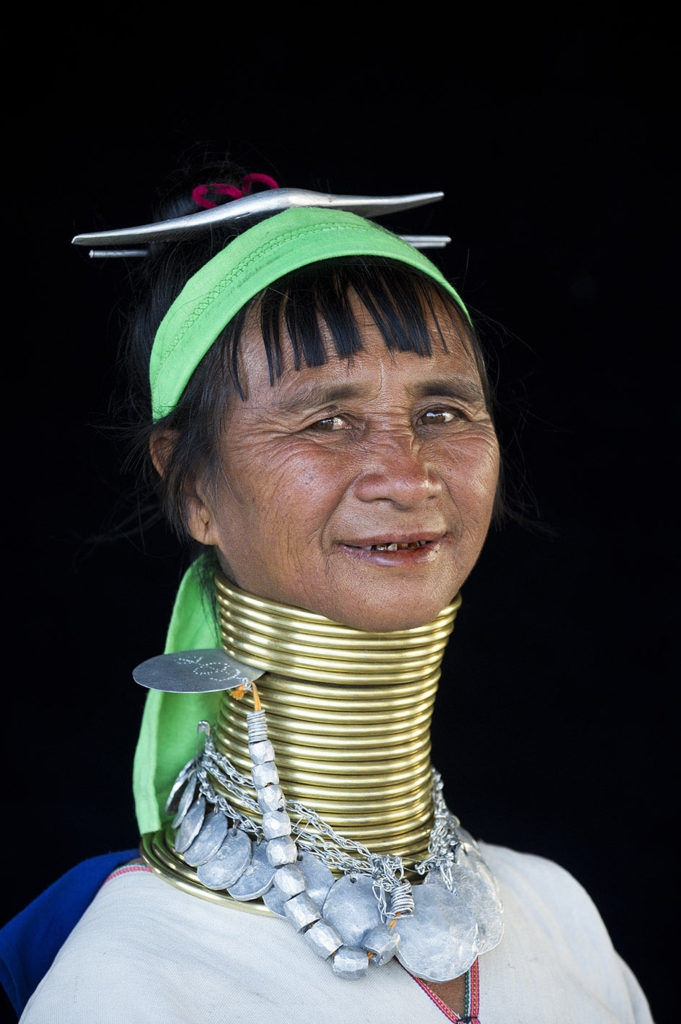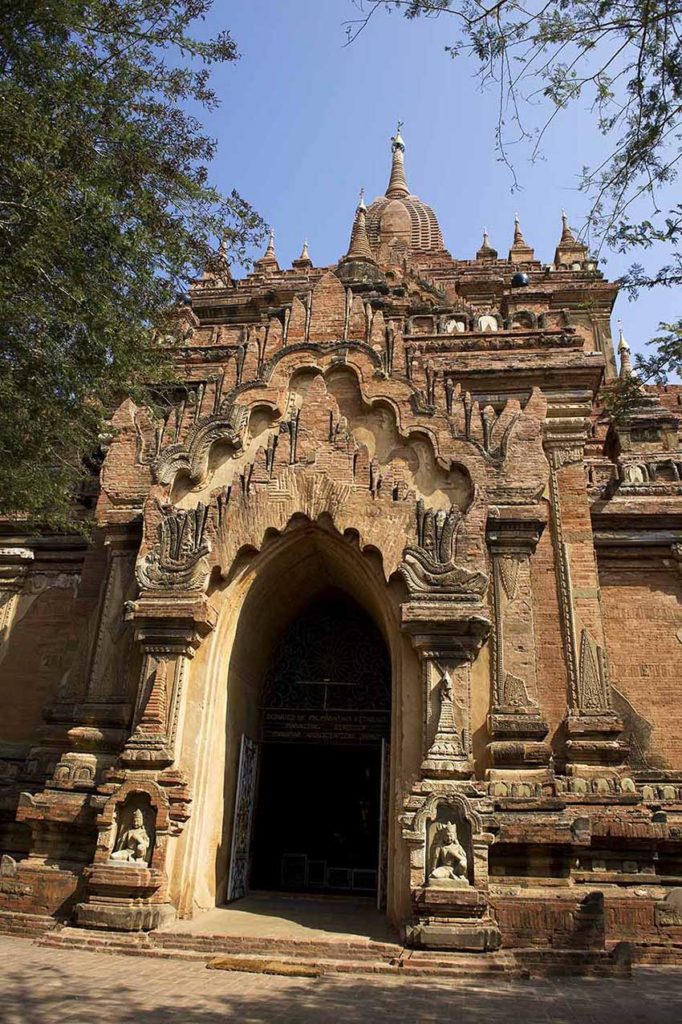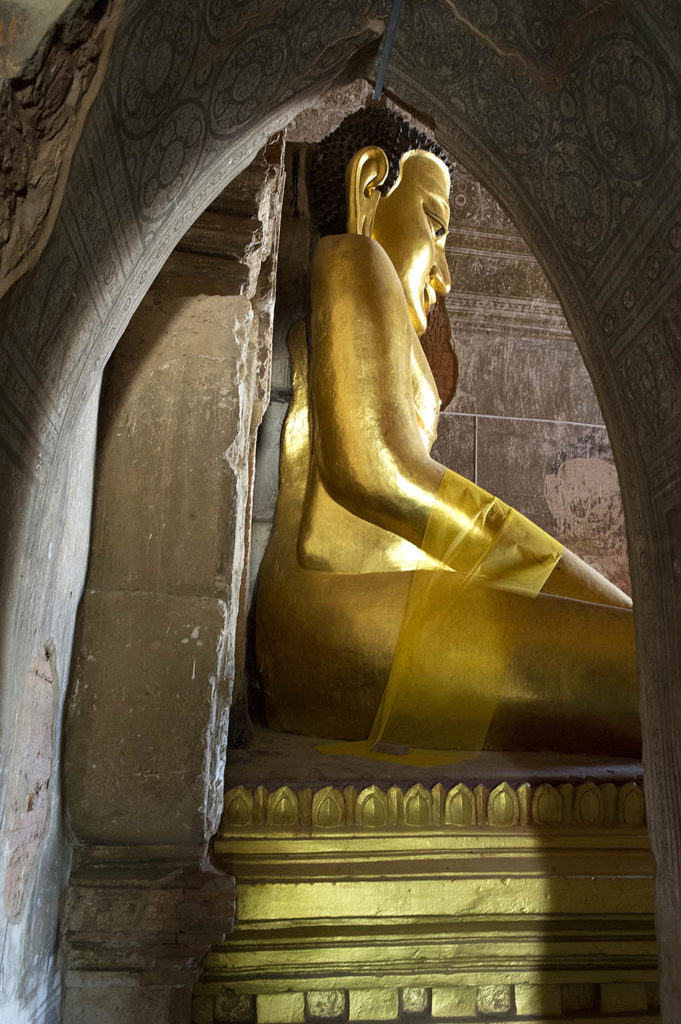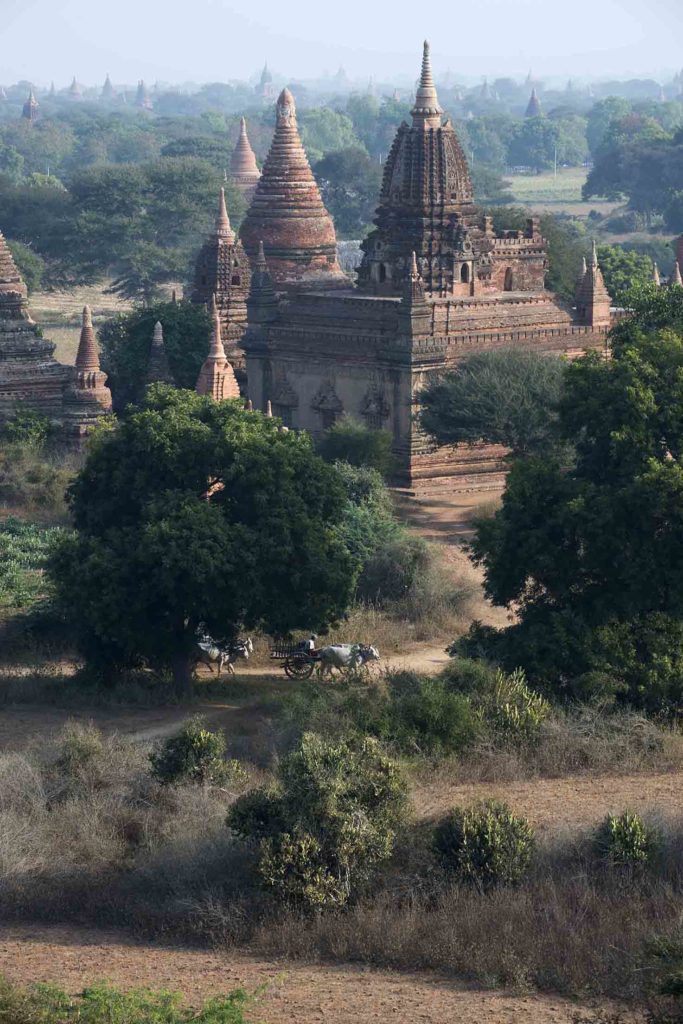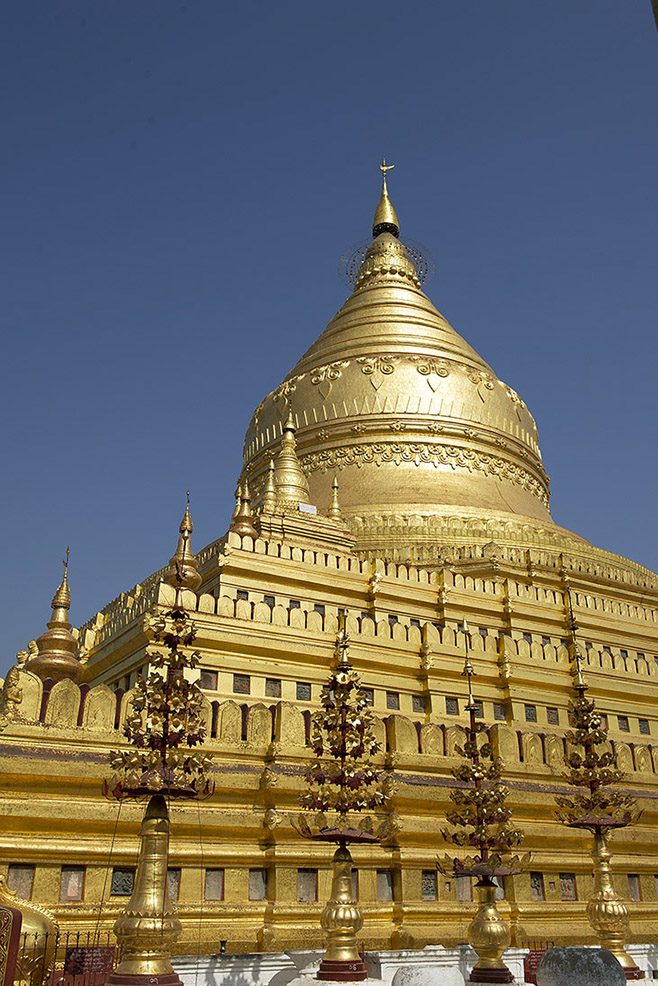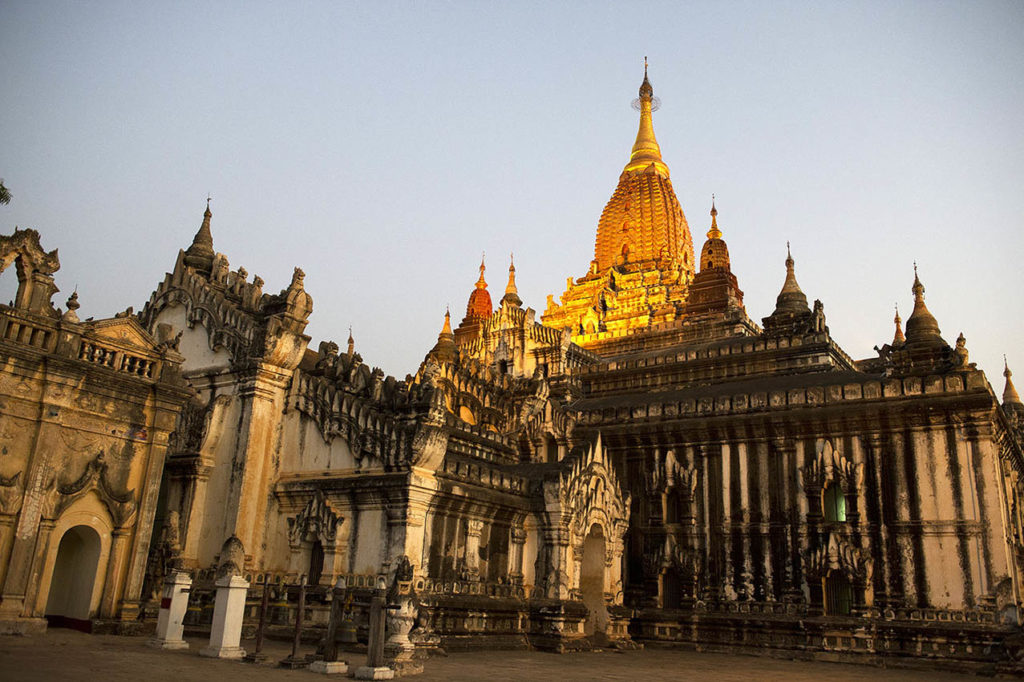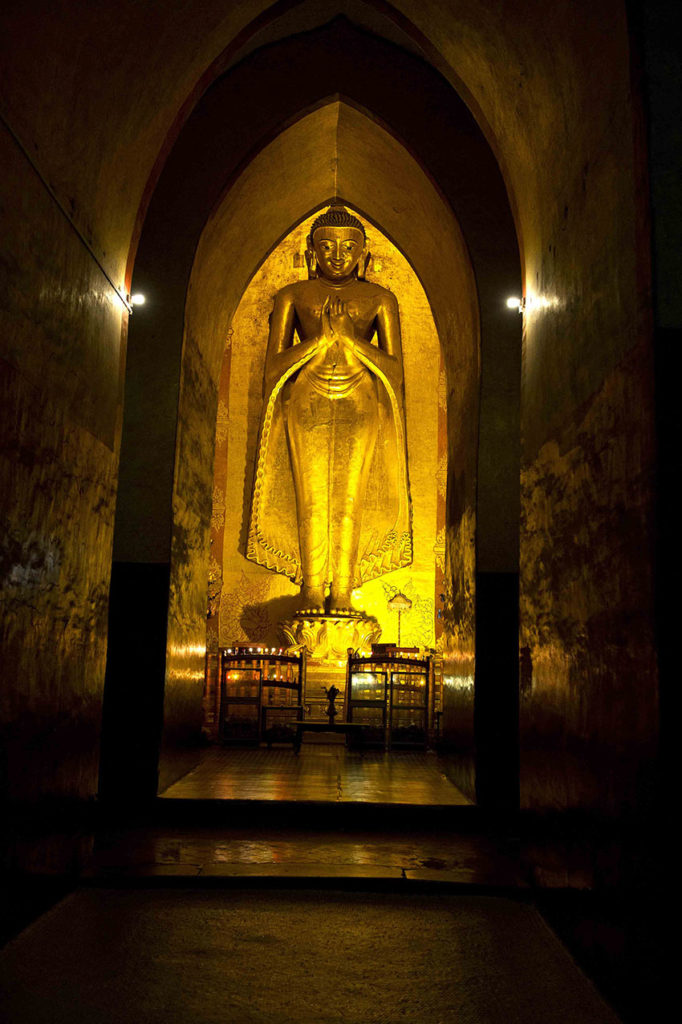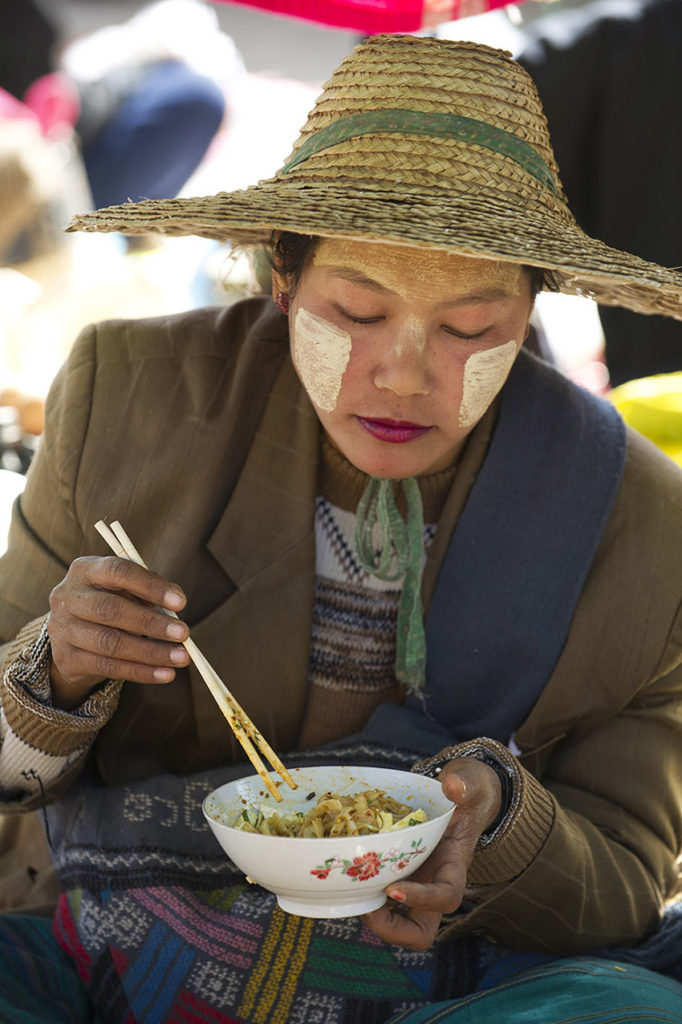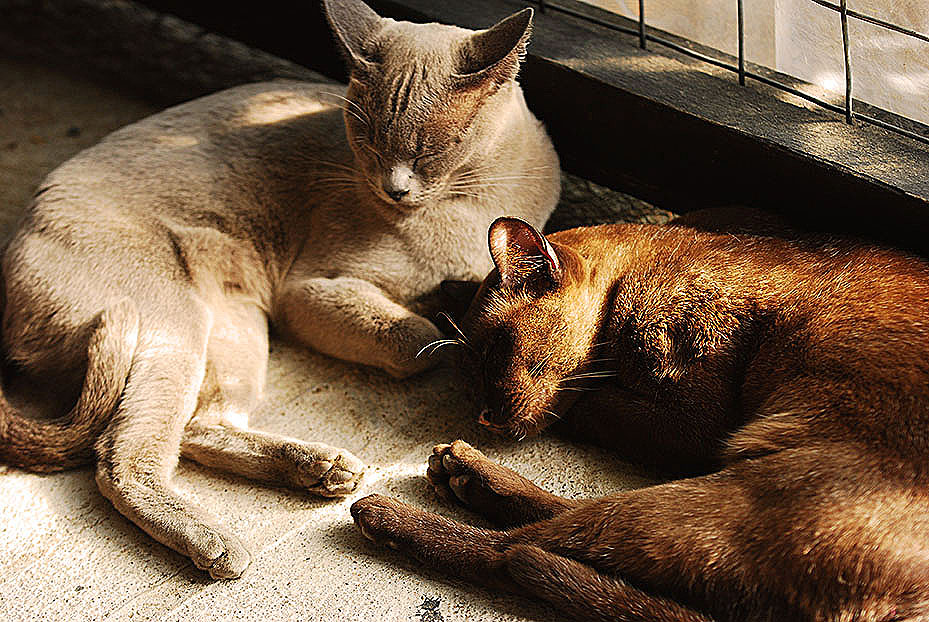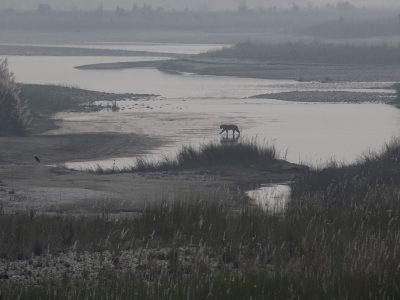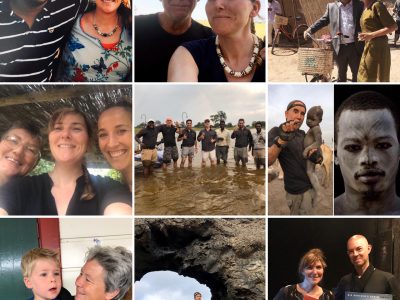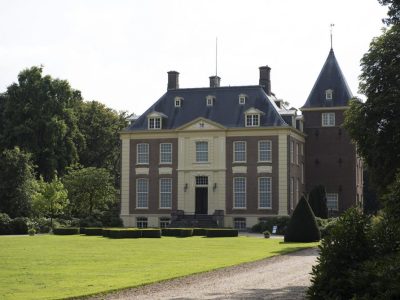On almost every street corner a monk walks, a temple or pagoda appears and curious eyes stare at you. After years of oppression Myanmar finally gets the opportunity to show her true face and culture and that feels like a warm blanket.
Text: Angelique van Os | Photography: Henk Bothof
The sun is low on the horizon, while the last remaining fogs evaporate above the water. The first Intha fishermen can be found on the Inle lake in the early morning and show their famous paddle technique. Elegantly, like a ballerina, they balance on one leg at the front of the boat, while rowing with the other leg around a paddle, causing the boat to move. A man-sized cone-shaped bamboo trap forms their fishing net and when something moves in the hellish water, they lower the trap and the fish is caught.
Dozens of small, large, simple or richly decorated wooden and bamboo houses on poles we see slipping by from our motorboat. Many of them have beautiful balconies with views over floating gardens and the surrounding mountain landscape of the state of Shan. The lake is 900 meters above sea level and with its 158km2 it’s big enough to receive the rapidly increasing tourist flow that travels to Myanmar, which mainly comes from the floating market of Ywama. Here merchants trade their goods by boat. The enormous interest is not surprising. Travelling to Myanmar, formerly Burma, has been difficult for years and the authenticity and folk traditions are much more intact than in neighbouring Thailand.
The former English colony was completely isolated from the outside world between 1962 and 1988, making travel to and in Myanmar almost impossible. This was due to the dictatorship of General Ne Win and his Revolutionary Council. His totalitarian system and army of spies kept a close eye on the population and everyone who got in his way was silenced. Economically, Burma fell into disrepair. From 1974 to 1981 many strikes and (student) uprisings took place, killing hundreds of people in 1988. A coup d’état, free elections, corruption and the struggle for independence kept the country in its grip for years. And the infamous 15 year long house arrest of politician and Nobel Peace Prize winner, Aung San Suu Kyi, caused more international disgust. Since her release in 2010 and her opposition party, the National League for Demonstration (NLD), won the elections in 2015, the tide seems to be turning. With Suu Kyi as foreign minister and her confidant Htin Kyaw as president, a cautious step towards democracy has been taken. However, there are now other problems: the political issue with the Rohingya (an Islamic minority that is the target of ethnic violence in Myanmar) is so high that certain areas are unsafe to travel.
Infinite water spectacle
The love for Aung San Suu Kyi is visible all over the country, on posters, on flags and depicted in kitschy souvenirs. She seems to be being carried on. However, we descend further away from civilization, to the south. Golden pagodas with their stupas (a religious complex with round towers) show off at the edge of villages. No other Asian country has as many sacred buildings as Myanmar. Buddhism is the most important and tangible philosophy of life in everyday society. You can read more about this in our tip Buddhism in Myanmar.
The lake gets narrower, winds like a snake and suddenly changes into a jungle of water hyacinths. Several boats in front of us are stuck in the plants with their screws. The boat wobbles when a sailor at the front balances on the point and tries to make his way through the water jungle with a chip. Little by little it succeeds and the road is clear. Passing water taxis packed with locals look surprised and curious when they see us drifting by; they hardly meet any tourists here. A big smile appears at eye contact and a simple greeting ‘mingalaba’ (hello).
The long trip of five hours doesn’t bore us for a moment; cows wander along the banks, farmers work on the land, children wave and the water landscape is constantly changing: full crops make way for the wide and balder second lake, Samkar. Diamonds shine on the water by the bright sunlight, followed by a blanket of low grass. It is an infinite spectacle, in which the constant humming of the engine and the silence of the surroundings have a calming effect, almost meditatively. To travel here, permission is required from the Pa-O, one of Myanmar’s 135 ethnic peoples. These friendly people speak their own language and the women are recognizable by their black clothes with colored edges and bright orange headscarves.
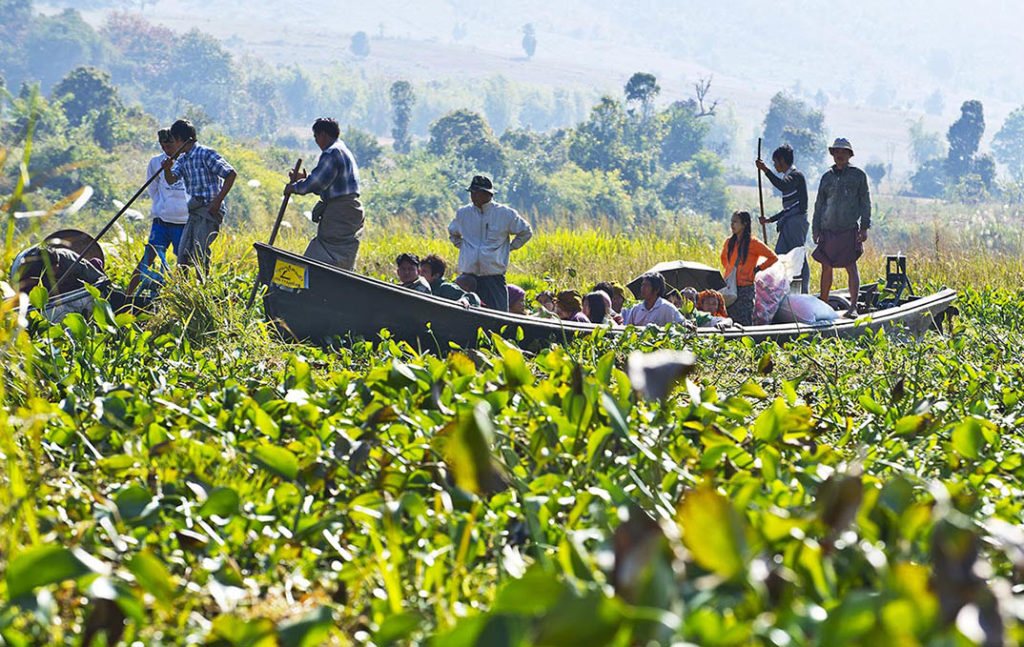
Colourful palette
After the third smaller lake, Hpekhon, the trip continues by bus, across bumpy roads along many villages, where Shan turns into the Kayah state, the east of Myanmar. Since 2005 it has been possible to travel here, although with an approved permit. So there are rules for travelling through Myanmar. Along the way rice and wheat fields alternate, followed by hilly red clay plains. After passing a strict checkpoint, the capital Loikaw appears in the distance. It is very busy there. The streets are black with scooters and mopeds because of the annual celebration of the Kayah state, which takes place at the beginning of January. It is a big happening for the locals. The festival consists of an impressive fairground market full of cheap stuff from China. The dozens of stands form a colourful palette of shoes, clothing, traditional lungy’s (cover skirts for both men and women), toys, bags, accessories, fruit and snacks; there is plenty to find. People negotiate, young people wander around drunk and tough men get tattooed on the spot.
Padaung women
In the evening, on a large stage, there are various traditional dance performances by ethnic tribes from all over the country. From large stale boxes, oos-terse sounds reverberate over the imposing lawn filled with silent spectators. By Western standards, the dances are not fascinating, in contrast to the endearing warmth that people show each other. When the soft-toned Padaung women see us, they wave enthusiastically. In the afternoon we visited them in the village of Sunboon, where only ten traditional longnecks or giraffe women live. The Padaung are known for their long, heavy neck rings, which they also wear under the knee on both legs. The environment of Loikaw is their original habitat, and not as often thought the north of Thailand. Many women have fled to the neighbouring country during unrest and poverty in the area. There they mainly wear traditional jewellery to earn money by posing for tourists. One by one they came by, with their brightly coloured hair-tops and baskets full of hand-woven scarves on their backs. They were just getting ready for the festival. Only twenty traditional Padaung women still live in the region, ten of them in Sunboon, between 44 and 60 years of age. What do they think about the fact that their customs are gradually disappearing? “Too bad. It is our culture, our heritage. Nevertheless, I understand it, because it is quite heavy. Some women find it difficult to move or have difficulty swallowing”, our guide interprets. “I got my first ring when I was five years old. I am now sixty and have never taken off the rings in all those years. This is part of me,” says the oldest woman lovingly. The rings can weigh up to five kilos. They don’t stretch the neck – as is often thought – but push the shoulders down. It is an optical illusion. Every year a ring is added, up to a maximum of 20 to 25 rings, the lower rings being wider and connecting to the collarbone. Why women wear the rings is unclear. A common historical explanation is the protection against tiger bites. The women themselves indicate that the rings symbolize their identity and beauty. A woman wears very detailed earrings. “They belonged to my great-grandmother, my most precious possession,” she said with a big smile.
“I am now sixty and have never taken off the rings in all these years. This is part of me”
Sad circus
The Padaung are not the only minority groups that are disappearing more and more, the same goes for the Kayah, who only wear traditional clothing during special ceremonies or parties. Times change; absorbing Western cultures and striving for economic progress can mean the end of ancient peoples and their cultures. The rapid increase in tourism is a huge change for the country. According to our four local guides, from 2011 there will be a 50 percent increase in travel to Myanmar! These experts agree that tourism is very good for the economy, because it creates more jobs. However, the infrastructure can hardly handle the demand. In addition, they do not hope for a second Thailand, where culture loses its authenticity more and more due to mass tourism. In a suburb of Mandalay, Amarapura, we see the puppet show around the large monastery Maha-gandayon where ten years ago hardly any tourists came. Now there are almost more visitors than monks. Tourists force themselves on when believers wait in line for their food and sometimes act disrespectfully like a paparazzi. What do the monks think of this? “We are open to visitors; are curious about their backgrounds and like to show how we live here. We don’t need mass tourism here, and you can see that here now. There is little privacy and peace. Visitors sometimes show too little respect and are too much present during prayers or dinner. It is very desirable that this is changed in the future. Spreading or limited admission of visitors is an appropriate solution”, says Ashim Kelasa, meditative mentor of the monastery. The circus of Amarapura is sad and does not stand alone. The Jumping Cat Monastery near Lake Inle has also become a tourist attraction. Here cats jumped through hoops, but because of the influx the animals are too tired. One of the guides tells us that the monks are not doing well, but some tour operators have double interests and put pressure on them.
Mystical still life
We exchange the still undiscovered Loikaw for the popular destination Bagan, city of temples, pagodas and stupas. Because this area is as big as the province of Utrecht, the crowds can be avoided with the right timing Guide Ko Naing Lin knows exactly where to start. Around a quarter past eight in the morning there is no chicken to be seen at the Shwesandaw pagoda. “At sunset it looks black of the people who travel through Myanmar”, says Lin while we sweat carrots to get to the top. The big uneven steps require all concentration. The pagoda is one of the 2200 still intact buildings and dates from 1057, the heyday of King Anawratha. Shwesandaw is one of the few monuments that can still be climbed. Most of the buildings are in too bad a condition or are protected. The view of the upper square terrace is truly breathtaking. As far as the eye can see there are only pagodas and temples in the sky. They form a mystical still life, waking up under a blanket of mist, surrounded by trees, shrubs and dusty dirt roads. Everywhere there are gold, bricks and white steps. One sober and badly renovated, the other beautifully intact and beautifully decorated, like the Gubyaukgyi Temple (in Wetkyi), with Buddha frescoes from the 13th century. The area covers a total of 4400 sanctuaries, most of which are located in ancient Bagan. During the Burmese ‘Golden Age’, from 1100 to 1300, Bagan was the capital of the first Burmese kingdom and the buildings shot up like mushrooms. “This is due to the conversion of Theravada Buddhism by King Anawrahta (1044-1077). Tell guide Lin. “The monk Shin Arahan convinced the monarch that he would never become a good Buddhist if he did not have the Tripitaka, the Holy Scripture. He had King Manuha of the western Mon kingdom of Thaton in his possession and did not want to relinquish it. As a result, Anawrahta won a battle in which he used the inhabitants – including the royal family – of Thaton as a slave for the construction of a large number of sanctuaries. This tribute to Buddha maintained his successors for two centuries.”
Almost deserted silence
Unfortunately we can only stay in Bagan for one day and need some exercise. We rent a bike, which must be a piece of cake, because all roads are flat. Lin raises his eyebrow and has an indoor fun. After about ten minutes we understand his reaction: it’s a bit disappointing, because the simple city bikes can barely handle the loose sand. Travelling through Myanmar by bike isn’t easy! Soon the sweat is on our forehead. Jealously we look at relaxed looking couples who pass by on horse and cart, but of course this is much more sporty. Don’t complain, keep pedalling. We are completely absorbed in the sparsely populated surrealistic landscape, because one temple up close is even more intriguing than the other. Highlight is the famous white square Ananda temple complex from the early period (1091). Again we have the empire to ourselves. At the end of the afternoon it is almost deserted quiet. This is not just a temple; the walls are over ten meters high and at four niches there are golden Buddha’s of the same size. “This is the original Buddha, from the 11th century. The other three were later replaced. Look at the face and walk back a few steps. What do you notice?”, asks Lin. Walking backwards, we suddenly see a big smile appear on the face; a clever architectural joke. Even now, that feeling is what dominates, everywhere those sincere smiles and twinkling eyes. Special, a nation that has endured so much suffering and yet has remained so warm and magical. That heartiness can only be cherished and embraced, with a thousand arms.
NB. This article was written before the sensitive political issue with the Rohingya (an Islamic minority that is the target of ethnic violence in Myanmar) arose.
to it
Special travel & Asia specialist Dim Sum, is one of the many providers of Myanmar travel. This organization has been active in the country for years and works exclusively with experienced local guides from partner Interconnection Travels. Everything is tight and well organized. In addition to individual and group travel, Dim Sum also provides tailor-made services and books safe domestic flights. Naast highlighs richt Dim Sum zich ook op off road bezoeken aan bergvolken, minder bekende steden en natuurgebieden, zoals beschreven in het verhaal. www.dim-sum.nl | 030 23 00 847
Transport & money
Travelling directly to Myanmar by plane can be done via Brussels, but is pricey. Several airlines make a stopover in Singapore or Bangkok.| Travel time: 13 to 15 hours| Cost of ticket: €900 to €1200.| Local travel by public transport is cheap, but time consuming and uncomfortable.| At airports or in large cities, dollars (new banknotes) and increasingly euros can be exchanged for the local kyat.| Best travel time: Dec-Mrt.
Stay
Our favourite hotels of Dim Sum’s selection: the Bagan Princess Hotel offers tasteful spacious colonial-style rooms, with swimming pool and Jacuzzi. The Inle Resort is a large scale luxury residence with colonial villas on Lake Inle. Extra: various spa treatments; downside: the massive and expensive restaurant. Breakfast is great. Hotel Queen Mandalay offers spacious, neat rooms in the heart of the city.
Eating
Canal Mandalay Restaurant
Beautiful garden and stunning traditional good food.|22nd Road, Btn 63th-64th Str., Mandalay
Aye-Myit-Tar
Here you can taste Myanmar cuisine like the locals at home.|81st, Btn 29th-30th str. Nr. 371, Mandalay
Phore Kawr Kay Restaurant, Loikaw
Delicious noodles, soups and vegetables for a good shot.
Feel Myanmar Food
No. 124 Pyihtaungsu Avenue Str, Dagon,Yangon | feelrestaurant.com . A popular restaurant among guides because of the diversity and the entertaining hectic cuisine.
Inthar Heritage House
The colonial hotel and (lunch) restaurant Inthar Heritage House is not only a great place to stay, it is also a refuge for dozens of Burmese cats. The graceful breed was almost extinct, but has been revived by the China Exploration & Research Society. The animals have their own ‘playroom, bedroom and playground’. The hotel is surrounded by beautiful plants and flowers, there is a beautiful shop where local gifts can be bought and art can be seen. Inthar also supports various educational projects. Definitely a must for cat lovers! |Inpawkhon Village, Inle lake.


